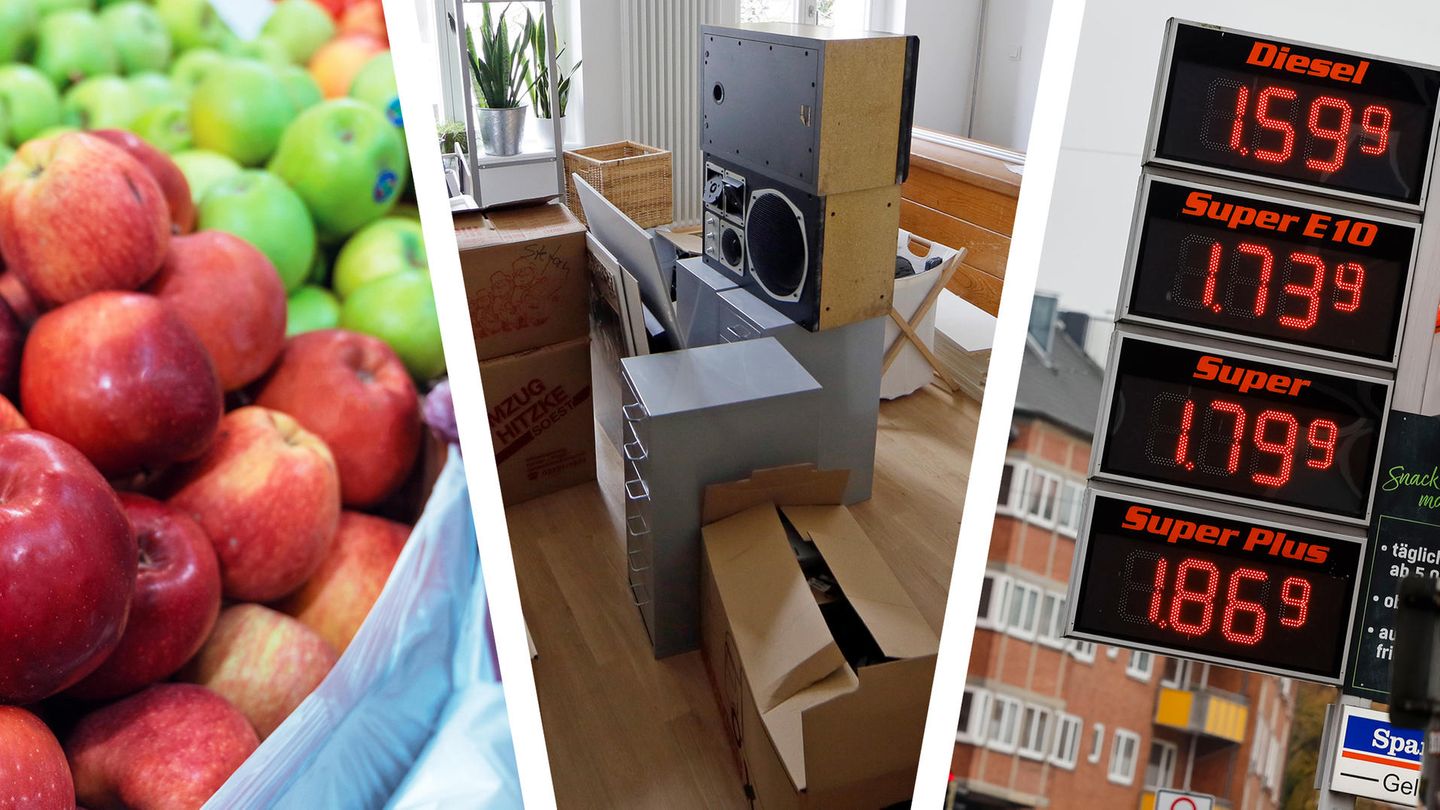The drastic rise in inflation in Germany recently shook many consumers. But what is really becoming more expensive and where are prices even falling? A data analysis provides information about this.
With monthly inflation rates of 4 percent and more, the cost of living in Germany rose more sharply in 2021 than it has been for a long time. In September inflation rose to more than 4 percent for the first time since 1993. In October, consumers were hit even harder, with prices rising 4.5 percent that month. However, these figures only show to a limited extent how expensive individual product and service categories have become. A look at the data shows: The individual segments are developing very differently, the price increases are not so drastic everywhere. In some cases the prices are even falling.
Inflation in basic needs and essential goods and services
Let us first look at the most important inflation figures for goods and services for basic needs, i.e. from the categories of food, clothing, housing, energy, health and transport. The official figures from the Federal Statistical Office (Destatis) show what most people should find plausible from everyday life: the price increase has been particularly strong in the last 30 years in these areas Transport, energy and housing instead of. Since 1991 the costs in these categories have more than doubled.
Health costs have also risen sharply. There was a big leap especially through the Health reform 2004. Among other things, the practice fee of 10 euros per quarter was introduced at the time, and patients had to pay 10 percent of the costs between 5 and 10 euros for drugs and aids themselves. Non-prescription drugs and glasses even had to be paid for in full by the patient. When the practice fee was abolished again at the beginning of 2013, the inflation rate in the health sector also fell significantly.
In the last 15 years also come Food as a cost driver added. While prices rose only moderately by around 15 percent compared to 1991 until 2006, the price increase has increased dramatically since then: During the same period, the cost of food has now increased by 45 percentage points. Well-known examples are rising prices for grain, which means that baked goods and pasta rose in price.
Inflation in other categories – special rates of increase in education and luxury foods
In comparison, two other categories rose even more sharply: For education German citizens have to spend two and a half times as much money today as they did in 1991. And also the prices for luxury goods such as Tobacco and alcohol increased significantly by more than 130 percent.
The jump in inflation was particularly striking Education sector in 2007. Destatis announces that the changes “in the period 2007 to 2013 are mainly due to the introduction and abolition of tuition fees in the federal states”. In addition, different regulations of the federal states regarding the remuneration for child day care would have an impact on the price development, especially in the last few years.
The positive news: In the telecommunications sector, prices are even falling
In addition to this negative news for consumers, there is at least one positive exception in the Destatis statistics: In the area Telecommunication and Post Although prices rose moderately in the 1990s, the trend was reversed after that. In the meantime, however, you pay significantly less than in 1991 for the Internet, telephone and letters.
background
In principle, the European Central Bank (ECB) wants a stable inflation rate. For a long time, the targeted inflation rate of the ECB was below 2 percent. The current goal of the ECB is an inflation rate of exactly 2 percent. The ECB sees this goal as “symmetrical”, so for the central bank an inflation rate that is too low is just as negative as an inflation rate that is too high.
Compared with the inflation rates for the categories, a constant annual inflation rate of 2 percent for the examined period of 30 years would mean a price increase of 81 percent due to compound interest effects (1.0230). A constant inflation rate of 1.5 percent would result in a price increase of 56 percent.
The Federal Statistical Office collects inflation data on individual categories such as “Food and non-alcoholic beverages”, “Alcoholic beverages and tobacco products”, “Clothing and shoes”, “Housing, water, electricity, gas and other fuels”, “Furniture, lights, appliances, etc.” Household Accessories, Health, Transportation, Post and Telecommunications, Leisure, Entertainment and Culture, Education, Catering and Accommodation Services, and Other Goods and Services. You can use these categories to understand in which areas goods and services were particularly expensive – or not
Source From: Stern
Jane Stock is a technology author, who has written for 24 Hours World. She writes about the latest in technology news and trends, and is always on the lookout for new and innovative ways to improve his audience’s experience.




